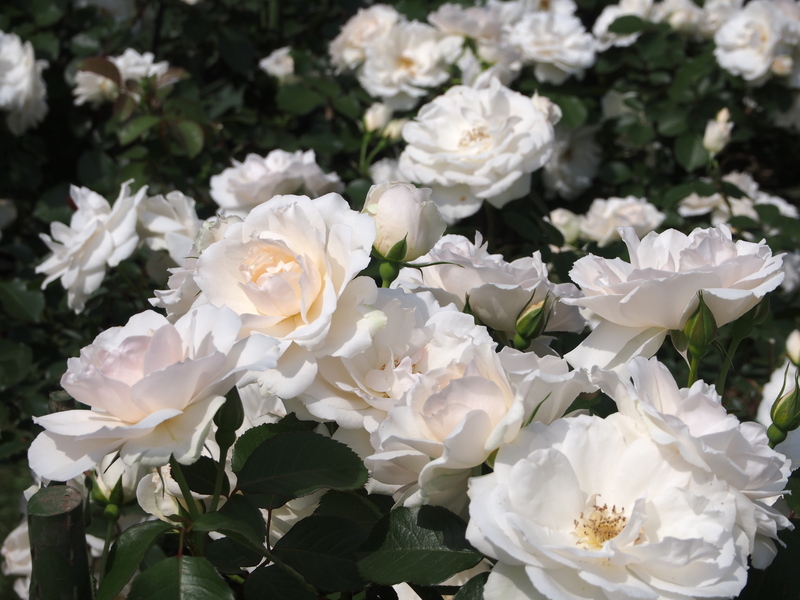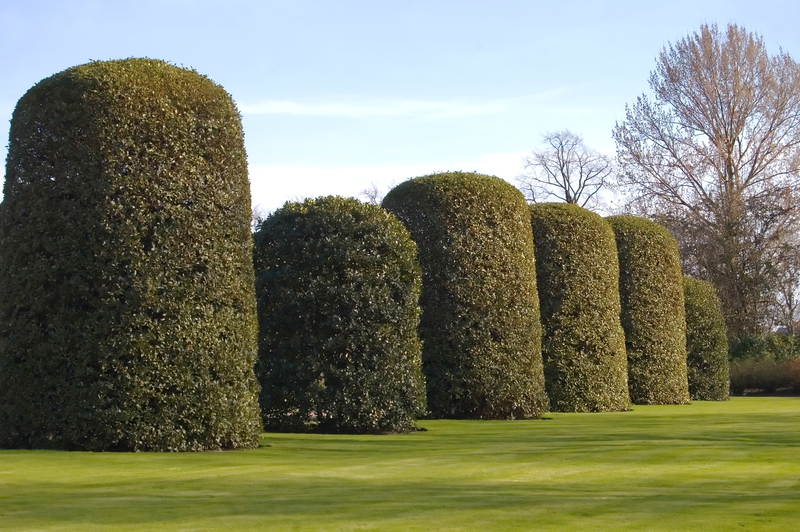Urban Aesthetics and Functionality with Vertical Gardening
Posted on 22/06/2025
Urban Aesthetics and Functionality with Vertical Gardening
Urban environments across the globe are rapidly evolving, with increasing emphasis on sustainability, green spaces, and aesthetic appeal. One of the most revolutionary approaches transforming city landscapes is vertical gardening. By utilizing walls, fences, and other vertical structures for plant cultivation, vertical gardens seamlessly blend nature with built environments, enhancing urban aesthetics and contributing to the functionality and health of cities. This comprehensive guide delves into the multidimensional benefits, innovative designs, and practical implementations of urban vertical gardening.

Understanding Vertical Gardening in Urban Areas
Vertical gardens, also known as green walls or living walls, refer to gardens that grow upward using trellises or other support systems rather than spreading out horizontally. This gardening approach is gaining momentum in urban settings where space is limited. From residential apartment complexes to commercial office towers, these lush vertical installations inject nature back into the concrete jungle, offering both visual delight and functional results.
Types of Urban Vertical Gardens
- Living Walls: Multi-layered systems with a variety of flora including flowers, ferns, mosses, and even edible plants rooted in specially designed panels.
- Green Facades: Vines and climbing plants grown directly on building surfaces or supported by trellises and cables, providing a green veil effect.
- Modular Planters: Stackable or wall-mounted containers that can be customized for herbs, succulents, or small vegetables.
- Hydroponic Vertical Gardens: Soil-free systems using nutrient-rich water, ideal for dense urban spaces.
The Aesthetic Impact of Vertical Gardening in Cities
Beautification of Urban Spaces
Modern cities often grapple with bland, grey facades and a scarcity of greenery. Vertical gardening solutions transform sterile exteriors into vibrant living art. Green walls soften hard surfaces, create dynamic visual contrasts, and infuse life into public and private spaces alike.
- Visual Interest: Vegetated surfaces create intricate textures and color palettes across seasons.
- Art Installations: Designers are incorporating patterns, logos, and even murals using a diverse range of plant species.
- Enhanced Urban Identity: Cities are now recognized for iconic green facades, boosting civic pride and tourism.
Biophilic Design and Psychological Well-being
Research shows that exposure to plants and greenery reduces stress, enhances mood, and increases productivity. Integrating vertical gardens into urban design supports the biophilic principle--the innate human craving for connection with nature, especially vital in bustling metropolises.
- Restorative Spaces: Green walls in hospitals, offices, and schools promote psychological healing and concentration.
- Natural Sound Barriers: Plants diffuse noise, making busy streets and commercial zones more serene.
- Public Engagement: Vertical gardens encourage communal interaction, creativity, and appreciation for urban landscapes.
Functional Benefits of Urban Vertical Gardening
Space Optimization in Dense Cities
As cities grow vertically, space at ground level becomes increasingly scarce. Vertical gardening leverages unused vertical spaces--exterior walls, balconies, rooftops, and even indoor atriums--to maximize the potential for greenery in confined areas.
- Increased Green Area: Plants can flourish where traditional gardens are impossible, exponentially increasing urban green cover.
- Urban Agriculture: Vertical farming supports the local production of herbs, microgreens, and vegetables, reducing dependence on lengthy supply chains.
- Multifunctional Surfaces: Wall spaces double as both a visual feature and a fresh produce source, especially important in food-insecure neighborhoods.
Environmental and Climate Benefits
The environmental advantages of urban vertical gardening are substantial and multidimensional.
- Air Purification: Living plants filter out pollutants, dust, and carbon dioxide, thereby improving air quality and respiratory health in cities.
- Thermal Regulation: Vertical gardens provide insulation for buildings, reducing urban heat island effects and lowering cooling costs.
- Stormwater Management: Green walls absorb rainfall, reducing runoff, flooding risk, and pressure on city drainage systems.
- Biodiversity Enhancement: They provide essential habitats for birds, pollinators, and beneficial insects in otherwise concrete epitomes.
Design Principles for Successful Urban Vertical Gardens
Site Selection and Assessment
An effective vertical garden begins with careful evaluation of the intended site. Factors such as sunlight exposure, wind patterns, wall material, and ease of access for irrigation and maintenance are paramount.
- Orientation: South-facing walls (in the Northern Hemisphere) receive optimum sunlight, but appropriate plant selection can accommodate shady spots.
- Structural Support: Buildings must be assessed for weight-bearing capacity, especially for large or irrigated installations.
- Microclimate Considerations: Urban canyons may experience increased heat, dryness, or wind--choose resilient plant species accordingly.
System Selection: Modular, Panel, or Hydroponic?
Selecting the right vertical gardening system is crucial for both aesthetics and functionality.
- Modular Systems: Ideal for beginners or small spaces; easy to install and maintain, with flexibility in plant choices.
- Panel/Mat Systems: Suited for large-scale or public projects; rooted in felt mats or coir panels anchored to walls for dense, continuous green coverage.
- Hydroponic Systems: Water-based, soil-free designs support rapid growth; excellent for food production and sustainable resource management.
Plant Selection For Urban Vertical Gardens
Carefully chosen plants assure the longevity and vibrancy of your green wall. Native species are recommended as they are well adapted to local conditions, require less maintenance, and support local wildlife.
- Drought-Resistant Plants: Such as succulents and xerophytes for low-management installations.
- Shade-Tolerant Varieties: Ferns and mosses for shaded urban corridors.
- Edible Plants: Herbs (basil, mint), lettuce, spinach, and strawberries for functional vertical gardens.
- Climbers and Vines: Ivy, jasmine, and honeysuckle for green facades and privacy screens.
Integrate seasonal plant rotation for year-round color and interest.
Irrigation and Drainage Solutions
Proper water management is a cornerstone of successful urban vertical gardening.
- Drip Irrigation: Automated or manual drip systems deliver water directly to the plant roots, minimizing waste and avoiding oversaturation.
- Rainwater Harvesting: Systems that integrate rooftop catchment with green walls maximize sustainable water usage.
- Drainage Layers: Essential for preventing root rot and ensuring water does not seep into building structures.
Urban Vertical Gardening: Challenges and Sustainable Solutions
Common Challenges
- Initial Cost: Installation can be labor-intensive and requires material investment, but long-term savings and benefits often offset initial outlays.
- Maintenance: Green walls need regular watering, pruning, and pest management, particularly in the early establishment phase.
- Structural Integrity: Buildings must be retrofitted or designed to handle additional weight and moisture.
- Plant Mortality: Choosing inappropriate plants or irrigation systems can lead to brown patches, affecting aesthetics.
Sustainable Urban Vertical Garden Practices
Incorporating sustainable principles enhances the longevity and ecological footprint of vertical gardens:
- Local Sourcing: Use locally grown plants, recycled materials for planters, and renewable irrigation sources to reduce carbon footprint.
- Integrated Pest Management (IPM): Embrace organic pest controls and beneficial insect releases over chemical sprays.
- Energy Efficiency: Green walls can reduce building energy needs, making them a cost-saving addition over time.
Inspirational Urban Vertical Gardening Projects
Patrick Blanc's Green Walls
Renowned botanist Patrick Blanc has pioneered living wall designs worldwide--from the Musee du Quai Branly in Paris to shopping malls in Bangkok and San Francisco. His lush architectural masterpieces demonstrate the transformative power of vertical gardening in urban design.
One Central Park, Sydney
One Central Park's towers in Sydney are celebrated for their spectacular vertical gardens, hosting more than 250 species of Australian flowers and plants that cascade over terraced balconies, redefining urban aesthetics and environmental responsibility.
Singapore's Gardens by the Bay
A visionary project, the Supertree Grove features colossal vertical gardens that support thousands of plants and generate solar energy, exemplifying how vertical gardening integrates functionality with breath-taking city artistry.

How to Start Your Own Urban Vertical Garden
Step-by-Step Guide
- Assess Your Space: Review wall orientation, sunlight, accessibility, and weight capacity.
- Choose a Vertical Garden System: Modular pockets, wire trellises, or hydroponic panels as per your aesthetic and functional needs.
- Select Suitable Plants: Consider climate, maintenance level, and desired look (edible, ornamental, or both).
- Install Support Frames and Irrigation: Partner with specialists for large installations or follow DIY instructions for smaller projects.
- Establish a Maintenance Routine: Schedule regular watering, feeding, pruning, and plant health inspections.
- Monitor Growth and Adapt: Keep track of thriving/planted species and replace or rotate as needed for year-round interest.
Conclusion: Creating Sustainable, Beautiful, and Functional Cities
Urban vertical gardening bridges the gap between architecture and ecology. These lush, vertical oases serve more than just a decorative purpose--they are tools for environmental improvement, social well-being, and efficient land use. By embracing vertical gardens, cities can enhance their aesthetic identity, foster healthier communities, and pave the way for a more resilient, sustainable urban future.
- Reimagine your city's landscape: Advocate for green walls in public spaces, workplaces, and even your own balcony or home.
- Participate in the urban greening movement: Every vertical garden, no matter its size, contributes to a healthier and more beautiful city for current and future generations.
If you're ready to experience the future of urban landscaping, vertical gardening is your starting point--merging unparalleled aesthetics and functionality for modern city life.

